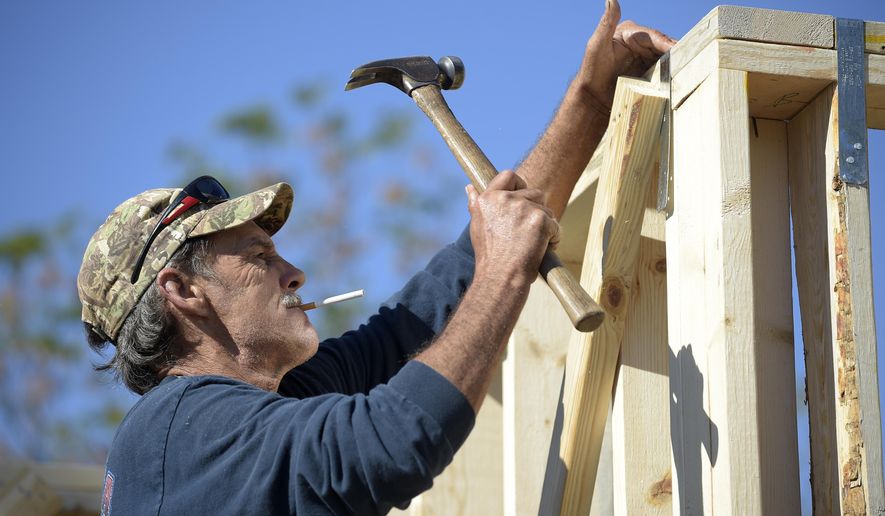OPINION:
The 21st century American workforce is changing, and will look very different just a few years from today given the ongoing technological innovation and the number of retirements of the baby-boom generation, which as begun, and will accelerate.
In one sense, this prediction is not difficult to make. The workforce — specifically the necessary skills that comprise it — has constantly been changing throughout the nation’s history.
This is all the more reason to ask: Is America ready to meet the needs of its workforce and industries to sustain a growing, competitive economy? Many signs today indicate our labor force is not equipped for the workplace of the near future, or even for the workplace skills needed for the present day.
This skills gap in America’s workforce constitutes the difference between what employers need their employees to be able to do, and what those employees can actually do on their first day of work. Congress and the Trump administration have begun to address nation’s skills gap in recent years, but much more can and must be done.
The skills gap exists in several major industries throughout the country, including in construction, manufacturing, mechanical, engineering, health care, food service and retail jobs. For example, the U.S. Labor Department reports that approximately 482,000 manufacturing jobs are available, but unfilled, with another 263,000 or so vacant construction jobs. These traditionally named “blue-collar” sectors are lucrative middle-class jobs upon which to raise a family and achieve the American dream.
Overall, there are now slightly more available jobs than the nearly 6.3 million Americans who are unemployed. Contributing to this is the alarming reality that millions of Americans lack of requisite workplace skills and are missing out on gainful employment. That is unacceptable.
If more drastic action is not taken today, our industries vital to a growing and competitive American economy will look elsewhere for talent to expand and meet demand. In fact, the need for many blue-collar skills will continue to grow as the median age of present-day employees is in the mid- to upper-50s in trades such as crane-operating, truck driving and welding, to name some examples.
Preparing a more skilled American workforce is a complex, multi-faceted process. No single policy is a panacea. The policy mix should start with addressing the needs of the approximately 1.5 million high school students who annually graduate or drop out and who do not attend post-secondary education.
The reality today is that there are six-figure salaried jobs that are available and obtainable for people who do not have a college degree. But, leaders in business, government and education must collaborate a great deal more to spread the word and implement the programs and incentives that will make millions of Americans skill-ready to fill the needed jobs of today and tomorrow.
Congress and many states have stepped up some efforts in recent years to spend and invest more in apprenticeship programs and workforce development. A recent example was the congressional reauthorization of the Perkins Act to strengthen and fund career and technical education programs in every state.
Government investment on such programs is important but insufficient. A recent report by McKinsey & Co. noted that governments are in the best position “to offer programs and incentives that position all employers to invest in the talent pipeline.” This is especially needed based on earlier McKinsey findings that “many employers are reluctant to participate in workforce programs, much less pay for them” based on lack of hard evidence of a return on investment.
Congress can at least address this problem head-on this year by passing the proposed USA Workforce Tax Credit Act, or HR 5153, which was introduced by Rep. Lloyd Smucker, Pennsylvania Republican, and now has three dozen co-sponsors. This legislation would provide effective financial incentives for more businesses and industries to step into the workforce preparation and apprenticeship arena. Specifically, tax credits offered would result in greater private-sector investment in such program areas to address the skills gap since companies would directly reduce their federal tax liability accordingly.
This bill also would provide tax credit incentives that would generate greater scholarship opportunities in K-12 education so that students and parents will have greater options — including, for example, alternative high schools with more career and technical education than traditional public school districts offer; or rather accessing higher quality education that better prepares students to enter an apprenticeship or skill-development program as alternative to traditional college.
Putting the nation’s workforce development strategies to work more effectively is not merely to meet future needs of a changing workplace, but the immediate needs for a skilled workforce. Accordingly, increasing tax incentives to encourage more direct investment by the private sector — to complement existing government workforce efforts — is critical to increasing the skills of workers and filling vacant jobs of today and tomorrow.
• V. Brett Melvin is the founder of Bridging America’s Gap.




Please read our comment policy before commenting.